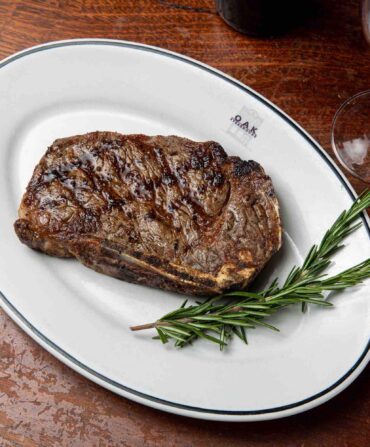1. For all we know, the famous Cherokee Purple tomato is only a few decades old.
One of the most popular heirlooms in the country has a name that harks back to generations of indigenous tradition, but its actual pedigree is a mystery. Heirloom hobbyist Craig LeHoullier named it twenty-five years ago, after he got the seeds in the mail from John D. Green, of Sevierville, Tennessee, who reported that they came from an unnamed woman whose neighbors had inherited the variety from native growers a century before. No one has ever confirmed those details, and some tomato experts doubt that the meaty, bruise-colored beauty could possibly be as old as the official story suggests. (It certainly isn’t a Tennessee native: Botanists agree that the tomato is not indigenous to the United States, and most likely arrived with European settlers.) But whether or not you believe the romantic backstory, its firm texture and wholesome flavor make it a good choice for a tomato-and-mayonnaise sandwich.
2. In New Orleans, the Creole tomato is a big deal. But it isn’t really a type of tomato.
Each summer, locals and tourists gather at the Creole Tomato Festival to celebrate one of the defining ingredients of summer in bayou country: a local variety of tomato said to be heartier and sweeter than its counterparts to the north. Except, it isn’t exactly a variety of tomato so much as just about any tomato grown in the fertile alluvial soils of southern Louisiana. Local farmers say that their tomatoes have extra heft and flavor, and chefs swear by them for creations like the Creole Tomato Jam that Tory McPhail serves at Commander’s Palace.

3. There’s a good chance that the diced tomato on your fast-food burrito came from Florida.
According to the Florida Tomato Committee, about half of all tomatoes grown in the United States ripen in the Sunshine State. During the winter, the percentage is much higher than that. The majority of them are the uniform fruits that ship by the millions to customers all over the world, not the charming stuff of roadside stands.

4. Fried green tomatoes are about as Southern as sauerkraut.
Which is to say, sort of. But not at all exclusively. Food historian Robert Moss has searched vintage cookbooks and newspapers for the origins of the regional favorite, and he has concluded that fried green tomatoes were a nationwide side dish until one best-selling novel and its film adaptation convinced a generation of cooks that they tasted best with a dollop of pimento cheese. Credit Fannie Flagg’s Fried Green Tomatoes at the Whistle Stop Café for those golden-brown slices at your local farm-to-table joint, which we have no problem claiming now. Get a recipe here.

5. Before tomato pie, there was green tomato pie.
“The pie connoisseurs who have been enumerating and classifying the different brands of pie in print of late have been guilty of a grievous omission in leaving out green tomato pie,” proclaimed an editorial in the New York Evening Sun in 1901. “Like sweet potato pie, the green tomato pie is indigenous to the southern section of the great pie belt, but there it is in high favor.” A make-do dessert from a region where apples can be scarce but tomatoes are abundant, the pie has all but disappeared in the past century. But if you’re curious about the flavor, we have a recipe.

Peter Frank Edwards








